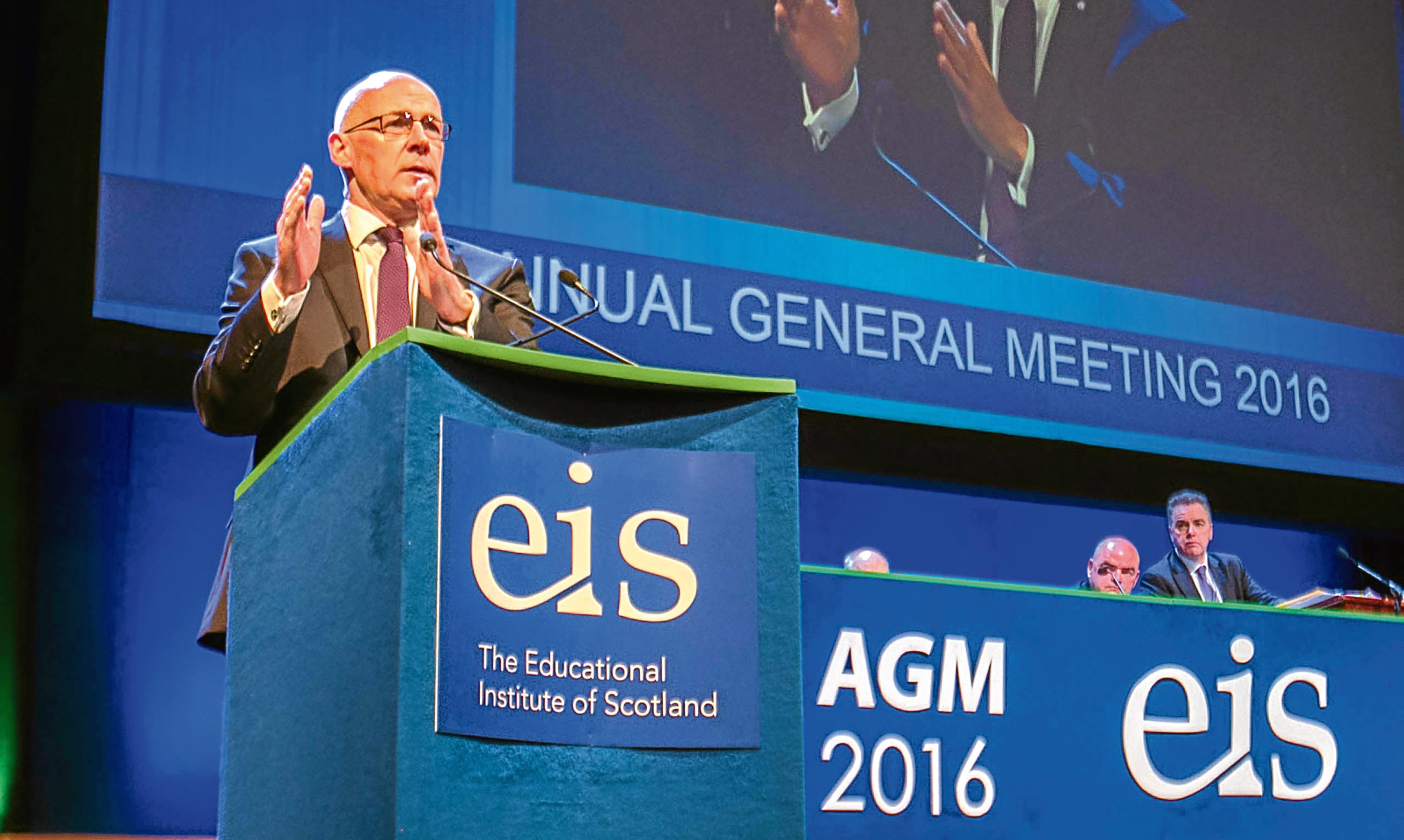The Education Secretary has published new guidelines on Scotland’s curriculum, designed to cut down teacher workload.
Workload has been one of the most common concerns raised with John Swinney since he was appointed to the education brief in May.
The guidance, entitled Delivering Excellence and Equity in Scottish Education – A Delivery Plan for Scotland, provides “clear, practical advice for teachers and practitioners on planning learning, teaching and assessment”.
Education union EIS welcomed the new guidance and urged the Scottish Government to “turn rhetoric into reality” quickly.
Mr Swinney said: “One of the first things I wanted to do, when I was appointed Education Secretary, was to go out and meet teachers face to face and hear directly from them how we could improve our education system.
“Workload was one of the most common concerns raised, so I wanted to take immediate action to address this to give teachers the time and space to do their jobs.
“During the last three months, I have spoken to a number of classroom teachers and this definitive piece of guidance is a result of what they have told us needs to be done to streamline guidance materials for the curriculum.
“It provides practical advice for teachers and has been supported by the teacher unions.
“The statement sets out clearly and concisely what teachers should and shouldn’t be focussing on. It will empower them to spend their time teaching and giving our children the best possible opportunities to learn.”
Dr Bill Maxwell, HM chief inspector of education and chief executive of Education Scotland, said: “Over the past few years, the education system in Scotland has undergone a huge change for the better.
“In some cases, however, these changes have led to an unintentional increase in workload for teachers, as a variety of different guidance has built up.
“Today’s publication is a step towards addressing those workload issues by stripping this accumulation right back to provide a single source of very clear guidance that, if followed by teachers, will help reduce the clutter in the system.”
Larry Flanagan, EIS general secretary, said: “The EIS welcomes the commitment from the Cabinet Secretary for Education to addressing the issues of excessive workload and bureaucracy and we will continue to work constructively with the Scottish Government to achieve these objectives.
“A cautionary note needs to be struck, however, as we have heard similar statements in the past and progress has often been slow.
“Turning rhetoric into reality remains the challenge; we need to see concrete change in our schools with clear results, sooner rather than later.”







